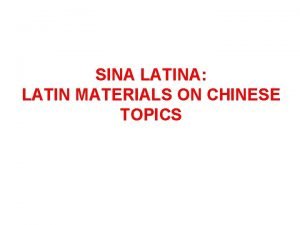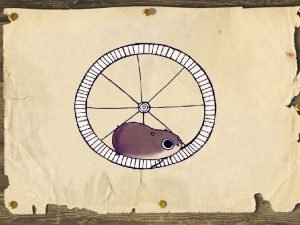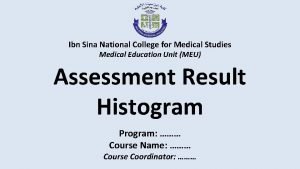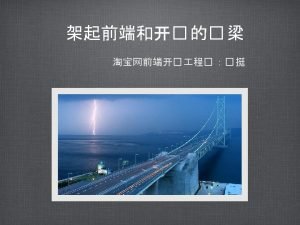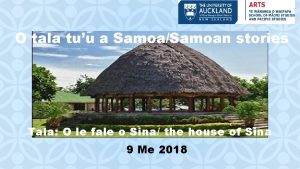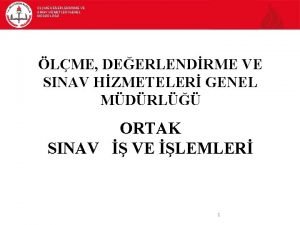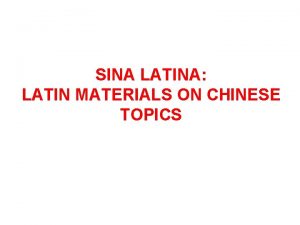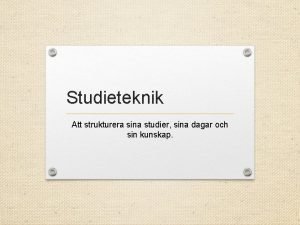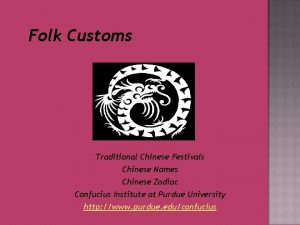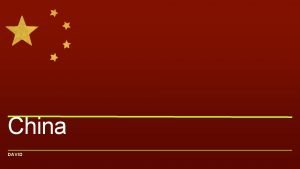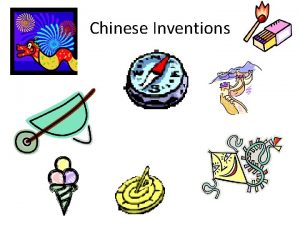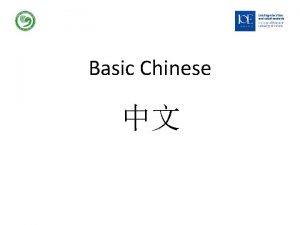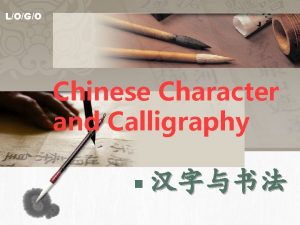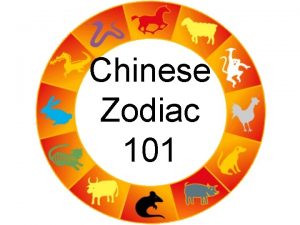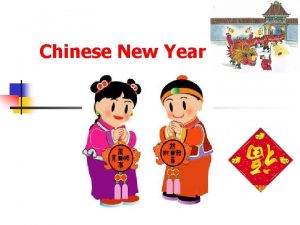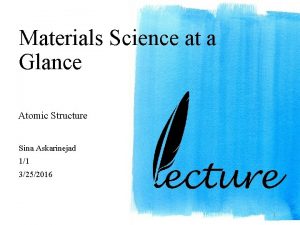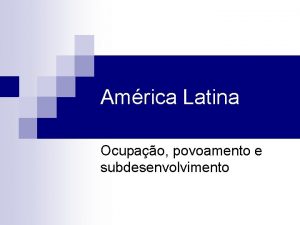SINA LATINA LATIN MATERIALS ON CHINESE TOPICS LATIN






















- Slides: 22

SINA LATINA: LATIN MATERIALS ON CHINESE TOPICS

LATIN NAMES FOR CHINA AND THE CHINESE • Sēres, -um: In use from at least 1 st cent. B. C, Greek loan word probably deriving ultimately from 絲 (Latin for silk is sēricum, -ī n), so means `the silk people’; the adjectival form Sērica (sc. terra) could be used to refer specifically to the land. But classical writers seem to have used Sēres also to, refer to other peoples along the `Silk Road’ or even in other regions. • Sīnae, ārum: Referred to both people and place, via Greek Sīnai or Thīnai from Sanskrit Cīna or a common source that may have been the dynastic names Qin (秦) or Jing (荆), or ʐina , the indigenous name for the Yelang夜郎 polity in Yunnan, through which Chinese products often reached India. Ptolemy (c. 150 A. D. ) distinguishes Sīnai in southern China from the more northerly Sērica but by the Middle Ages Sīnae was standard usage for China as a whole, with the singular Sīna used less often. Early modern texts sometimes used China (e. g. in the title of Kircher’s 1667 Latin publication China Illustrata) but this is not found in recent Latin writing.

A passage in the Book of Han (漢書) refers to soldiers in the army of a Xiongnu (hun) chieftain adopting a `fish-scale’ formation when defending their fortress in Kazakhstan against a Han attack in 36 B. C. It has been suggested this was the Roman testūdō tactic and that the soldiers were amongst Roman prisoners captured after their defeat by the Parthians at Carrhae (in modern Turkey) in 53 B. C. and sent to defend Parthia’s eastern frontier in present-day Turkmenistan. These men were supposedly later taken into Chinese service and founded the village of Liqian (< legiō? ) in Gansu, However, although a number of villagers now appear to have Caucasian ancestry this could easily be simply the result of ethnic intermarriage along the Silk Road

Eastern trade as described in `The Periplus of the Erythraean Sea’, a Greek text compiled in the 1 st century A. D. Chapter 64 states: `Under the very north (i, e north from the Malay Peninsula), the sea outside ending in a land called Thys, there is a very large inland city called Thinae, from which raw silk yarn and silk cloth are brought on foot through Bactria to Barigaza (Bharuch in Gujarat). ’

Tashkurgan (`Stone Fortress’) in Xinjiang, the furthest point east on the Silk Road reached by the Macedonian Maes Titianus, who probably made his journey in the late 1 st century or early 2 nd century A. D. The Seleucid Empire (one of the Hellenistic successor kingdoms to Alexander the Great’s empire) had already been brought to an end by the Romans in 64 B. C.

THE WORLD ACCORDING TO POMPONIUS MELA (43 A. D. ? ) Latin text at http: //www. hs-augsburg. de/~harsch/Chronologia/Lspost 01/Pomponius/pom_orbi. html • Eurasia and Africa completely surrounded by sea but Asia and Africa imagined much smaller than in reality. • A hypothetical continent south of the equator but assumed to be inaccessible because of the unbearably hot zone separating it from Africa. • The Caspian Sea as a gulf connected to the Arctic Ocean. • The `Seres’ in the middle of Asia’s eastern coast.




• "In the ninth Yongyuan year (97 A. D. ) during the reign of Emperor He, Protector General Ban Chao sent Gan Ying (甘英) to Da Qin (大秦, the Roman Empire). He reached Tiaozhi (probably the kingdom of Characene, whose capital was Charax Spasinou) and Sibin (? Susiana, western Persia) next to a large sea. He wanted to cross it, but the sailors of the western frontier of Anxi [Parthia] said to him: "The ocean is huge. Those making the round trip can do it in three months if the winds are favourable. However, if you encounter winds that delay you, it can take two years. That is why all the men who go by sea take stores for three years. The vast ocean urges men to think of their country, and get homesick, and some of them die. " When [Gan] Ying heard this, he discontinued (his trip).

The inhabited world as known to the Greek geographer Ptolemy (c. 90 – 168 A. D. ) and engraved by Johannes Schnitzer in 1482

South-East Asia as drawn in the 15 th century from Ptolemy’s coordinates. `Sinae’ is clearly shown north of the Gulf of Tonkin, with `Sericae pars’ (`part of Serica’) further north

The Hou Han Shu records the arrival in 166 A. D. (about 15 years after the publication of Ptolemy’s maps) of an embassy from安敦 (i. e. Antonius), king of Da Qin (i. e. Rome). The ambassadors travelled by sea, probably entering China through Tonkin and must have been sent either by Antonius Pius (died 161) or his successor, Marcus Aurelius Antonius.

One of the most important manuscripts of the memoirs of Marco Polo, who visited China in the late 13 th century, is a Latin version found in Toledo cathedral in Spain

Kircher’s CHINA ILLUSTRATA (1667)

Emperor Kangxi (reigned 1662 – 1723 ) with the Jesuit astronomer Adam Schall and colleagues.

In 1702 Arcade Huang (黃嘉略), a mission-educated Chinese Christian was brought to Europe by Bishop Artus de Lionne (left), becoming Chinese interpreter to Louis XIV and cataloguer of Chinese works in the palace library. He is said to have drafted a Chinese-Latin dictionary and, after his premature death in 1716, his pioneering work on a grammar of Chinese was completed by Étienne Fourmont, who published it with Latin explanations in 1742.

`Nobilis filia Ça xiao kie passa verecundiam ad vindicandum postea – De vino cognoscitur homo quid vult intus corde, quid amat, movet passiones, potest solvere tristiam (error for tristitiam), delere mestitiam, sed nocet aetati, facit hominem prudentem in stultum, mutat faciem mansuetam in tyrannam, uno verbo est medicina cogens hominum (error for hominem) ad insaniam. Haec verba hortantur ut homines cum temperantia bibant vinum. ’ Noble daughter Ça xiao kie suffered shame for the sake of later vindication (? ) – From wine one knows what a man wants in his heart, what he loves, what moves his passions; it can dissolve sadness, put an end to unhappiness, but it is harmful to life, makes a sensible man into a fool, turns a gentle countenance into a tyrannical one, in a word it is a drug driving a man into insanity. These words urge that men should drink wine in moderation Text quoted in 1811 by French Orientalist Abel Rémusat from a translation by `Abel Yên’ from Beijing of a Chinese short story. The translator and Arcade Huang are mentioned by Rémusat as rare examples of Chinese who showed any interest in foreign language and the lines themselves were the only example of Latin written by a Chinese at this time that could be discovered for use in this Power. Point

German Orientalist Julius Mohl, and the title page of his 1834 -39 edition of the I-Ching (易經), based on earlier work by Jesuit scholars.

Literary scholar, Christian apologist and children’s author C. S. Lewis, who conducted a correspondence in Latin over several years with an Italian priest, wrote in 1953 `dē clāde illā Sēricā’ (aka`解放’!)

David Morgan (1959 - 2013), enthusiastic proponent of `living Latin’, conducting a class. As well as his on-line modern Latin dictionary he wrote an article in Latin on Adam Schall’s Historica Narratio de Initio et Progessu Missionis Societatis Iesu apud Chinenses (Vienna, 1665)

THYIADII (Chia Tao) Anachoretam quemdam quaerit poeta, neque tamen invenit Pinus subter, ab assecla Deserti dominum jure requirimus. Is vero «procul hinc pater: Herbas jam medicas ipse per ardua Terrarum, atque virentia Collecturus abit, nubibus abditus Spissis, » inquit, «et aëre. Quo secedat. . . io! me penitus latet. » One of the translations – or expansions – of classical Chinese poetry recently produced by Italian Classicist and Sinologist Massimo Scorsone (see http: //www 3. unisi. it/semicerchio/upload/sc 34_scorsone. pdf )
 Sina latina
Sina latina Primary 3 malay worksheets
Primary 3 malay worksheets Adapting and adopting materials
Adapting and adopting materials Natural materials
Natural materials Direct materials budget with multiple materials
Direct materials budget with multiple materials Example of useful and harmful materials
Example of useful and harmful materials Natural materials and man made materials
Natural materials and man made materials U ime oca sina i svetog duha
U ime oca sina i svetog duha Paano ipinapakita ni tenyong ang kanyang pagmamahal sa ama
Paano ipinapakita ni tenyong ang kanyang pagmamahal sa ama Tauhan sa banaag at sikat
Tauhan sa banaag at sikat Ano ang senakulo sa panahon ng kastila
Ano ang senakulo sa panahon ng kastila Ibn sina national college for medical studies
Ibn sina national college for medical studies Nawil t
Nawil t är ingen ett pronomen
är ingen ett pronomen Ibn sina muerte
Ibn sina muerte Naglis guntis
Naglis guntis Wall names in attack on titan
Wall names in attack on titan Sina mail
Sina mail Sina jafarpour
Sina jafarpour Talatuu
Talatuu Pangngalan basal
Pangngalan basal Lme sina
Lme sina Principios del sina
Principios del sina
